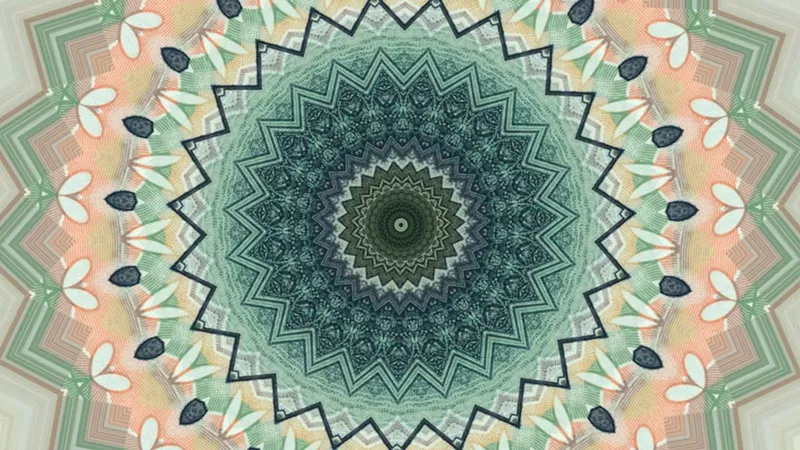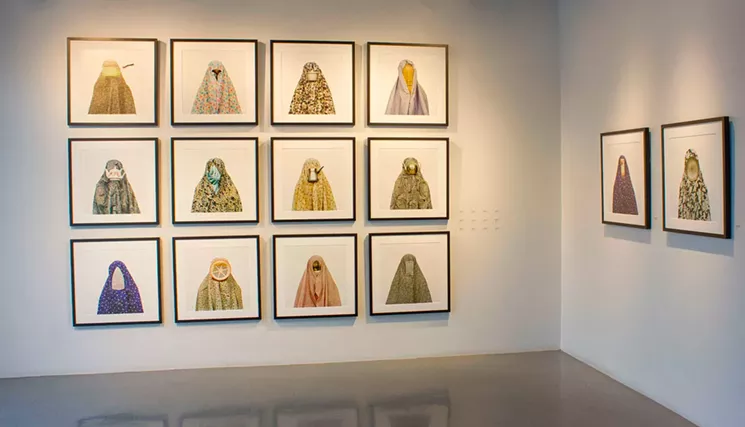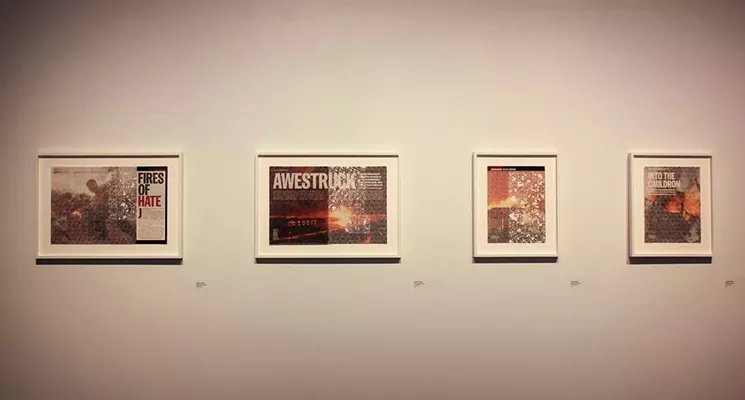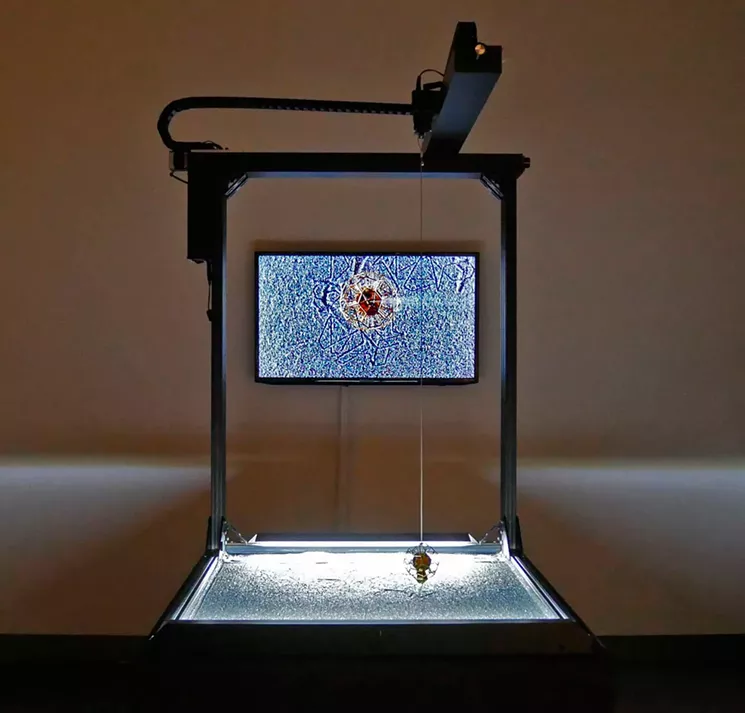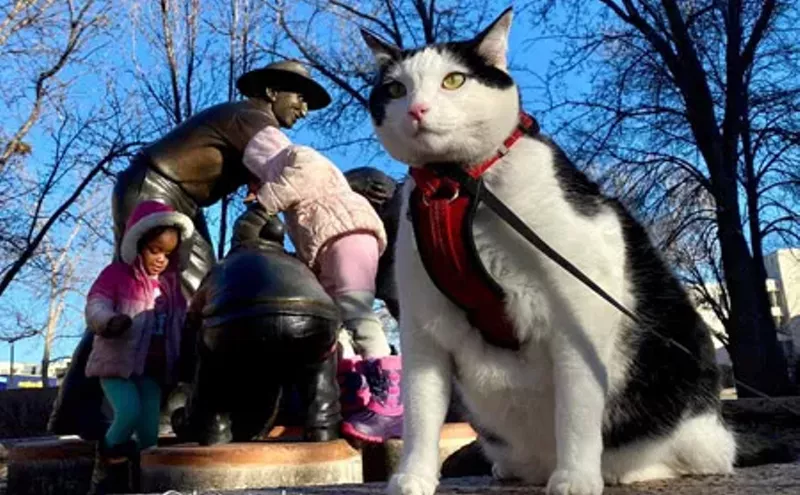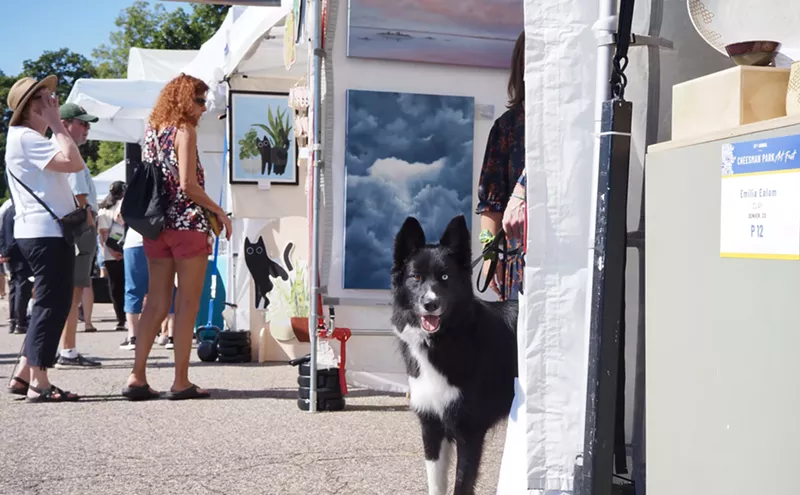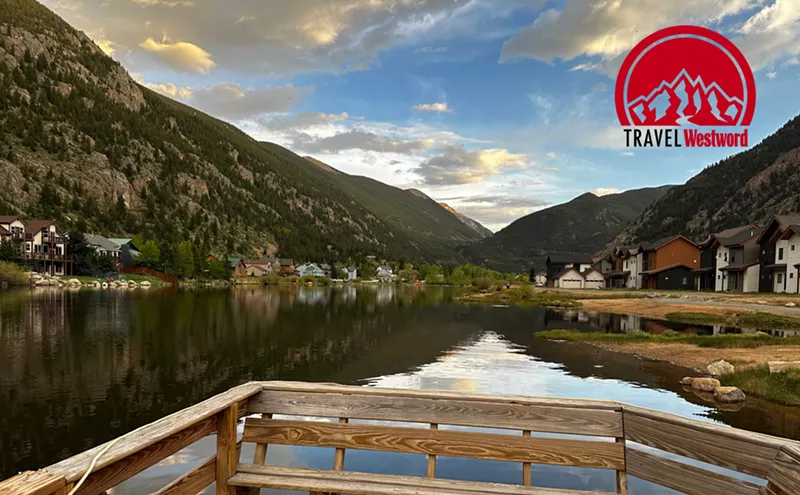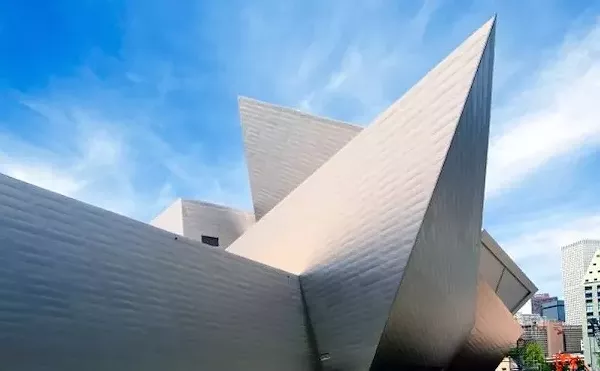One of the early standouts is Presence: Reflections on the Middle East, at the Center for Visual Art, Metropolitan State University of Denver’s off-campus exhibition space in the Art District on Santa Fe. The show comprises more than sixty works by a dozen artists, all natives of Muslim-majority countries. Most of these artists no longer live in their homelands, though, and have immigrated to the United States or Canada.
While the Middle East has been a hot topic for over half a century, it’s become even more heated under the Trump administration, and especially since Donald Trump issued his travel-ban executive order at the end of January. The now-on-hold ban was aimed at specific Muslim-majority countries in that war-torn region — the ones that didn’t have a Trump-branded hotel, golf course or resort, that is. That makes Presence even more pointedly topical and politically charged today than it would have seemed two years ago, when the exhibit was first conceived. To pull off this ambitious show, Cecily Cullen, managing director and curator of the CVA, tapped the expertise of a couple of visiting faculty members at Metro: art historian Leila Armstrong and photographer Natascha Seideneck. The trio wove connecting threads through all the pieces they chose: Everything has been done through some photo-based method, and everything refers to the cultural traditions or realities of the Middle East.
Many of the works deconstruct traditional customs, and they are among the strongest pieces — starting with the work of one of the first artists on view, Shadi Ghadirian, an Iranian. Digital photos selected from her “Like Everyday” series all feature the same humorous and insightful idea for a self-portrait: a depiction of the artist wearing a veil, but in place of her face, she’s inserted the image of an ordinary household article such as a teapot, an iron or a colander. The veils are the traditional type that Iranian women wear inside their homes; the domestic objects were Ghadirian’s wedding presents. The crisp depictions of the wedding-gifts-as-faces create a striking contrast to the lyrical patterns of the delicately colored veils. This work is not only conceptually smart, but great-looking, too.
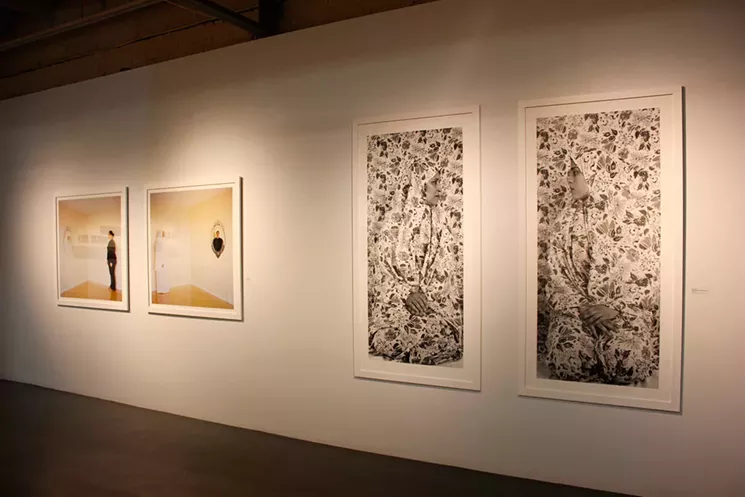
"Mirror/Mirror Allah/Allah" and "Untitled, Generation Series (Mother Daughter)," by Arwa Abouon, photograph/diptych.
Center for Visual Art
Patterns have long been associated with Islamic art, and Ghadirian and Abouon aren’t the only artists here who use them as part of their image-making. Iranian-American Samira Yamin has pierced Time magazine pages about terrorism with tiny, tightly organized patterns reminiscent of screens that she cuts by hand.
Also hand-cut are the photo-based collages by Brooklyn-based Iranian artist Golnar Adili, but her chosen patterns are less intricate, nothing more than stripes.
The most elaborate use of patterning is shown by Laleh Mehran, an Iranian who lives in Denver, in her video and separate, multi-part drawing machine. The video, “Dominant Policy,” uses patterns from different currencies from around the world to create a kaleidoscopic image on a continuous loop; as one gives way to the next, the result is mesmerizing. The drawing machine, “Entropic System,” consists of a computer-driven pendulum that inscribes a pattern into a layer of black sand. The movement of the pendulum is altered by the presence of viewers, and the inscribing process is shown on a monitor behind it. This is a tabletop version of a monumental machine that Mehran exhibited some years ago at the Arvada Center; that piece and an earlier pierced cube at the Denver Art Museum indicate that patterning has become a Mehran signature.
Astounding as it is to find a top-tier contemporary Middle Eastern artist like Mehran in the Mile High City, two more Denver artists working at her level are also included in Presence: brothers Sami Al Karim and Halim Al Karim, refugees from Iraq. The brothers do not work collaboratively, but both obliquely refer to their shared cultural background and experiences.
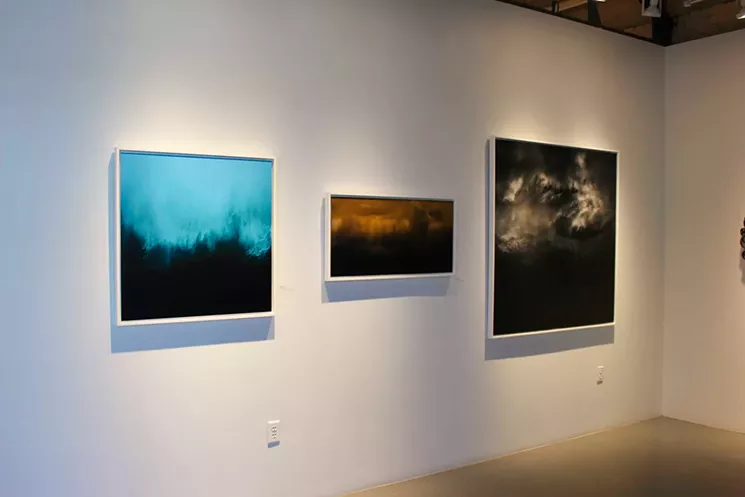
"Dream" series, by Sami Al Karim, c-print mounted on Dibond aluminum.
Courtesy of the artist and Robischon Gallery.
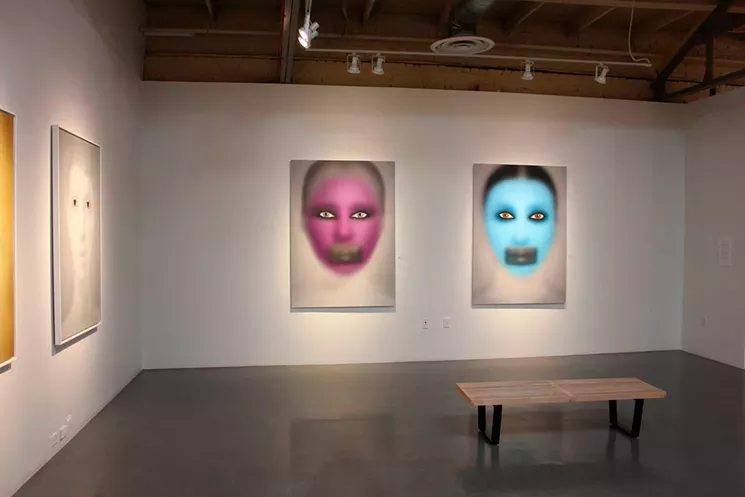
"Lost Memory" and "Hidden Love" series, by Halim Al Karim, lambda print on Dibond aluminum and lambda print.
Courtesy of the artist and Robischon Gallery.
The timing of Presence, part of MoP in the age of Trump, is ideal. But that’s only one of the reasons this show deserves your attention in this photo-heavy month.
Presence: Reflections on the Middle East, through April 8 at MSUD Center for Visual Art, 965 Santa Fe Drive, 303-294-5207, msudenver.edu/cva.

